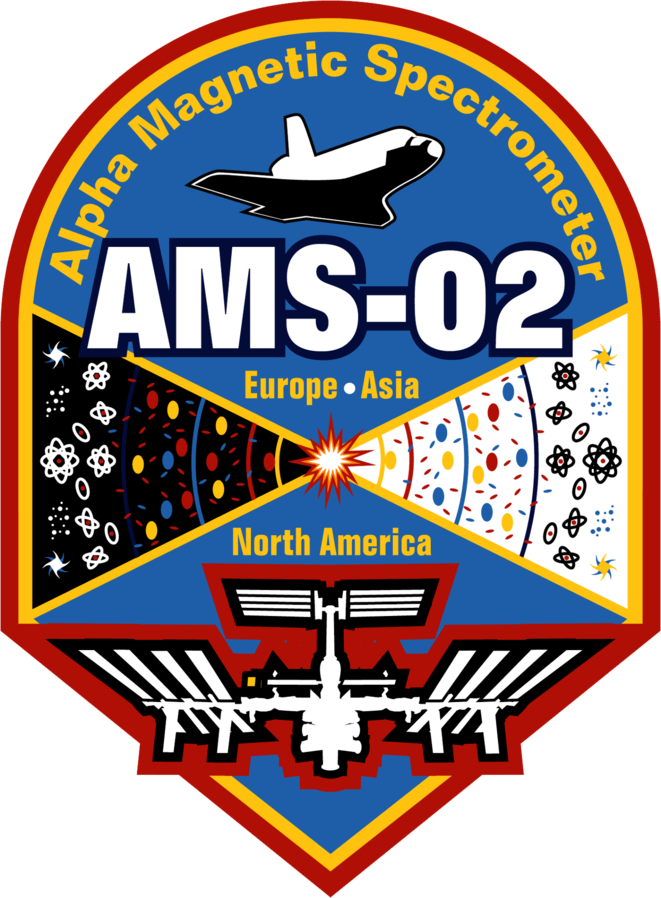Properties of Cosmic-Ray Sulfur and Determination of the Composition of Primary Cosmic-Ray Carbon, Neon, Magnesium, and Sulfur: Ten-Year Results from the Alpha Magnetic Spectrometer
We report the properties of primary cosmic-ray sulfur (S) in the rigidity range 2.15 GV to 3.0 TV based on $0.38 \times 10^6$ sulfur nuclei collected by the Alpha Magnetic Spectrometer experiment (AMS). We observed that above 90 GV the rigidity dependence of the S flux is identical to the rigidity dependence of Ne-Mg-Si fluxes, which is different from the rigidity dependence of the He-C-O-Fe fluxes. We found that, similar to N, Na, and Al cosmic rays, over the entire rigidity range, the traditional primary cosmic rays S, Ne, Mg, and C all have sizeable secondary components, and the S, Ne, and Mg fluxes are well described by the weighted sum of the primary silicon flux and the secondary fluorine flux, and the C flux is well described by the weighted sum of the primary oxygen flux and the secondary boron flux. The primary and secondary contributions of the traditional primary cosmic-ray fluxes of C, Ne, Mg, and S (even $Z$ elements) are distinctly different from the primary and secondary contributions of the N, Na, and Al (odd $Z$ elements) fluxes. The abundance ratio at the source for S/Si is $0.167 \pm 0.006$, for Ne/Si is $0.833 \pm 0.025$, for Mg/Si is $0.994 \pm 0.029$, and for C/O is $0.836 \pm 0.025$. These values are determined independent of cosmic-ray propagation.
Table-SM-I
Download the S tableThe sulfur flux $\Phi_\mathrm{S}$ as a function of rigidity at the top of AMS in units of $\mathrm{[m^2\cdot sr \cdot s \cdot GV]^{-1}}$ including errors due to statistics (stat.); contributions to the systematic error from the trigger, background, and acceptance (acc.); the rigidity resolution function and unfolding (unf.); the absolute rigidity scale (scale); and the total systematic error (syst.). The contribution of individual sources to the systematic error are added in quadrature to arrive at the total systematic error.
Table-SM-II
Download the O tableThe O flux $\Phi_\mathrm{O}$ as a function of rigidity at the top of AMS in units of $\mathrm{[m^2\cdot sr \cdot s \cdot GV]^{-1}}$ including errors due to statistics (stat.); contributions to the systematic error from the trigger, background, and acceptance (acc.); the rigidity resolution function and unfolding (unf.); the absolute rigidity scale (scale); and the total systematic error (syst.). The contribution of individual sources to the systematic error are added in quadrature to arrive at the total systematic error. Note, this Table has 48 bins. Table SVIII shows the same O flux in different binning (66 bins). Please see text for details.
The Ne flux $\Phi_\mathrm{Ne}$, the Mg flux $\Phi_\mathrm{Mg}$, the Si flux $\Phi_\mathrm{Si}$ and the F flux $\Phi_\mathrm{F}$ as a function of rigidity at the top of AMS in units of $\mathrm{[m^2\cdot sr \cdot s \cdot GV]^{-1}}$ including errors due to statistics (stat.); contributions to the systematic error from the trigger, background, and acceptance (acc.); the rigidity resolution function and unfolding (unf.); the absolute rigidity scale (scale); and the total systematic error (syst.). The contribution of individual sources to the systematic error are added in quadrature to arrive at the total systematic error.
The C flux $\Phi_\mathrm{C}$, the O flux $\Phi_\mathrm{O}$ and the B flux $\Phi_\mathrm{B}$ as a function of rigidity at the top of AMS in units of $\mathrm{[m^2\cdot sr \cdot s \cdot GV]^{-1}}$ including errors due to statistics (stat.); contributions to the systematic error from the trigger, background, and acceptance (acc.); the rigidity resolution function and unfolding (unf.); the absolute rigidity scale (scale); and the total systematic error (syst.). The contribution of individual sources to the systematic error are added in quadrature to arrive at the total systematic error.
The CRDB at LPSC/IN2P3/CNRS, online since 2013, is fully described in Maurin et al. (2014, 2020)
The CRDB © SSDC is developed at the Space Science Data Center, a facility of the Italian Space Agency (ASI).
